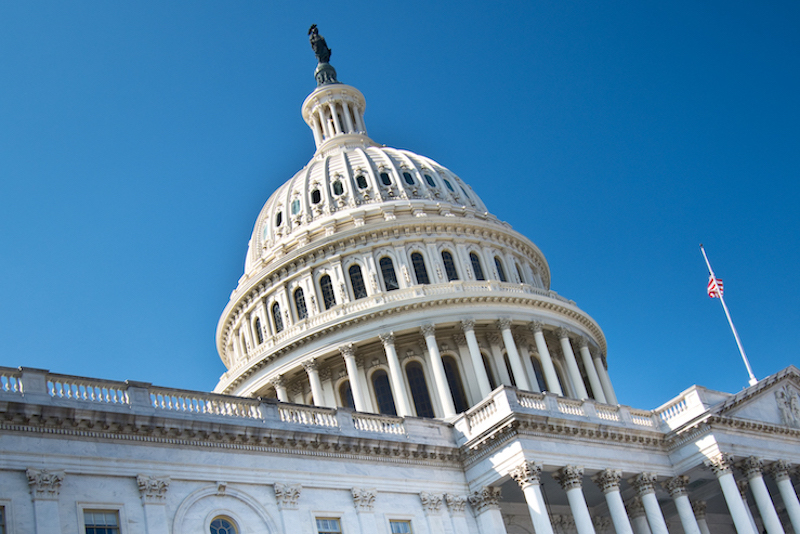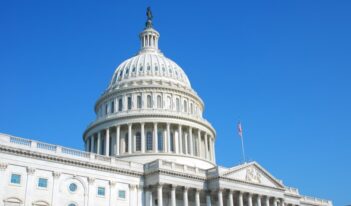
Bid challenges are effective management tools, not just administrative attacks.
Every year, up to 40 percent of the federal government’s discretionary budget is spent on contracts for goods, services, and projects. In 2019, the U.S. government spent over $500 billion through its federal procurement system.
Unsatisfied vendors routinely challenge federal officials’ procurement decisions through bid protests. A bid protest is a challenge to the terms or award of a public contract. Currently, vendors may bring bid protests before an independent agency, a court, or the procuring agency itself.
Although members of government and industry often dislike these protests, many nations around the world have similar processes allowing for challenges to procurement decisions. For example, the World Bank allows parties to bring “complaints,” the U.N. Convention Against Corruption labels them “reviews,” and the European Union has a similar system for procurement “remedies.”
In the past, U.S. courts have often treated bid protests as a means of remedying bidders’ injuries. But a recent study sponsored by the Administrative Conference of the United States (ACUS) and endorsed by the U.S. Congress has helped to frame a new narrative: Bid challenges are risk-reduction devices that lend governments early notice of system failures.
The Government Accountability Office (GAO) issued what many scholars believe was its first bid protest decision in 1926. In that case, during GAO’s review of government spending, the agency ruled that the U.S. Army’s specified requirements for trucks were too restrictive and therefore unlawfully anticompetitive. As an independent agency, GAO’s bid protest function continues today, and GAO hears over 2,000 protests a year.
Federal bid protests may also be brought to the U.S. Court of Federal Claims, although this court hears fewer than 200 bid protests per year. The history of the Court of Federal Claims’ statutory bid protest authority can be traced to Scanwell Laboratories, Inc. v. Shaffer, a 1970 decision from the U.S. Court of Appeals for the D.C. Circuit. In Scanwell, the court of appeals held that disappointed bidders had standing to protest contract awards. The court wrote that the public interest in having agencies follow procurement regulations could “properly be vindicated through a suit brought by one who suffers injury as a result of the illegal activity”—a suit, the court said, brought “by one acting essentially as a ‘private attorney general.’”
The Scanwell court also explained that disappointed bidders “are the people who will really have the incentive to bring suit against illegal government action, and they are precisely the plaintiffs to ensure a genuine adversary case or controversy.” Quoting the U.S. Supreme Court’s decision in Baker v. Carr, the D.C. Court of Appeals emphasized that parties must have “‘such a personal stake in the outcome of the controversy as to assure that concrete adverseness, which sharpens the presentation of issues upon which the court so largely depends.’”
In the 1990s, the Clinton Administration sought to formalize a third pathway for bid protest, through protests to the procuring agencies themselves. Through an “agency-level” bid protest process, disgruntled bidders who complained of buyers’ choices could levy formal complaints. Agency-level bid protests allow bidders to protest cheaply, as well as formally.
But the agency-level process affords little access to the administrative record—leaving bidders suspicious that agencies will unfairly handle their protests, even if the protest has merit. As a result, bidders and their counsel have seldom sought relief via the agency-level bid protest process.
Through its commissioned study on agency-level bid protests, ACUS sought to remedy the reluctance among bidders to participate in the agency-level protest process. On its face, the ACUS study was about administrative innovation, examining how individual agencies have incrementally improved their agency-level bid protest processes. ACUS assessed those changes thematically and offered broader recommendations for change, based on best practices from the agencies themselves.
What the ACUS study shows at a deeper level, however, is that agencies’ innovations in agency-level bid protests have made these protests a more effective means of internal monitoring.
Some agencies, such as the U.S. General Services Administration, have named independent officials whose role is to conduct more objective assessments of agency-level bid protests and the failures of the agencies’ own processes. Other agencies, including the Army, have set up internal bid protest reporting systems to help identify recurring sources of failure. Finally, some agencies, such as the Air Force, have given certain bidders more access to the administrative record, in essence making the protesters better-informed whistleblowers.
In sum, the ACUS study helped frame a distinct way of rethinking bid protests—as a means of reducing risk, whether from corruption or sloth.
The study also sets the stage for the next report Congress that has called for: a study of U.S. Department of Defense bid protests, assessing their costs and impacts.
The pending study of the Defense Department’s process, due in September 2021, seeks to build on a comprehensive 2018 government-commissioned RAND report. In that report, the RAND Corporation found that only 0.3 percent of contracts are protested, despite bitter complaints from officials that protests are pervasive and disruptive. Although Defense Department personnel “were concerned that the process incentivized protests, potentially preventing the timely award of contracts,” the report also documents that private sector actors “viewed bid protests as a way to hold the government accountable.” In other words, protests are a means for monitoring the procurement process through an administrative whistleblower system.
Rethinking bid protests to view them as risk-mitigation measures puts any number of legal issues in a different light. For example, standing to protest becomes a more malleable concept when based on whether a potential protester has legitimate concerns that should be brought forward through a protest—precisely the approach embraced in Scanwell and more recently by the Federal Circuit in Acetris Health v. United States.
And, if a protester is really a whistleblower rather than an injured party seeking monetary redress, a judicial stay of the procurement pending the outcome of the protest becomes more important. Controversial as a stay might be, a stay preserves the protesting contractor’s chance at award—the linchpin to the protester’s willingness to challenge its government customer.
Finally, under this “whistleblower” paradigm, how protests are argued may change too. Vendors presenting protests may refocus their protests to highlight potential risks to the government, rather than their own claims of injury.
If the pending report to Congress follows the trajectory suggested by the ACUS study, treating bid challenges as risk-reduction measures that ultimately can benefit the government, ACUS may have helped clarify a fundamentally different approach to bid protests—one grounded in reducing risk in public procurement.
This essay is part of a 7-part series, entitled Improving the Accessibility and Transparency of Administrative Programs.




